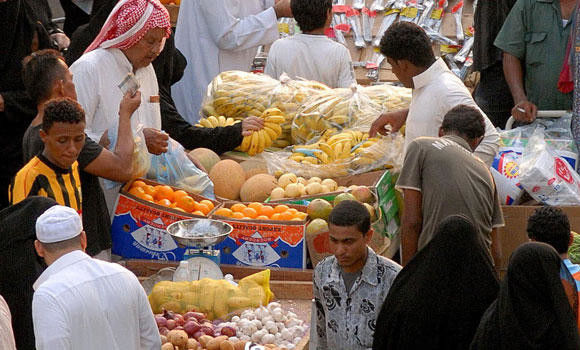Abha: "the mamsha"
- Matthew P G

- Nov 12, 2022
- 3 min read
Updated: Mar 17, 2023

March 2018
Something unique to Saudi Arabia is the concept of the "mamsha". A mamsha is a linear park made especially for strolling in the early evening or in pleasant weather. When I first lived in Abha, there was only one mamsha, the original one downtown along the small river that used to flow through town. That river, dammed up with barely more than a trickle escaping, serves as the back up reservoir for the city. The watercourse, however, remained.
When I first visited the mamsha, the riverbed was lined with concrete, looking like something straight out of downtown LA. Along each side, lovely jacaranda trees were planted and the place made for a pleasant stroll. The somewhat garbage-filled, concrete trough far below didn't add much to the experience, unfortunately. The city planners set to work and covered over the unattractive stream bed to create a grassy, landscaped linear park that then became an instant hit in a city with very few safe options for walking ("safe" meaning no risk of being picked off by a passing vehicle). By the time I left, several mamsha had been built around the city with one of the longest carved out of the neighborhood near my home (which I fully appreciated and utilized). Nevertheless, if anyone invited me to "the mamsha" in Abha, it could only mean the original one downtown.
Every time I visited the Abha Mamsha (not really that often, it was quite far from my place and too difficult to get to without a car), I ran into students, staff, or fellow teachers from KKU. Abha was a huge city, but with entertainment venues being few and far between, it was nearly guaranteed that if I went anywhere locally well-known, I would run into people I knew. That actually became annoying in a place where I was trying to escape work (students and colleagues). For that reason I turned down most invitations to stroll along the Abha Mamsha.
I applauded the Saudi government for the investment in these parks (built all over the country) because everyone in Saudi was rapidly getting out of shape. Lethargy nearly had become an epidemic and many of my students were overweight. Saudis went from a wiry, skinny people to a large, indolent population in one generation. The difference was stark in my classroom. I had the sporty kids who loved to play football and often went hiking in the mountains alongside the fat kids who cocooned in their rooms at home and played video games so much they had vitamin D deficiencies. The government realized it was a health crisis and invested in those linear parks to encourage people to get out and walk.
Many people DID use the mamsha because they were the only places where all Saudis could come together - male and female, single and married - and walk around without fear of the religious police swooping in and accusing them of "illegal mixing" with the opposite sex. Hence, the mamsha were prime flirting grounds for young men and women desperate to have even the most minimal of interactions.
So it was that part of my stranger-than-reality life in Saudi Arabia was regular walks in a linear park at least once a week either alone or with friends to get some exercise. I am sure for some future Saudi sociologist there is a PhD thesis waiting in a study of the phenomenon of the mamsha and their use. I was simply grateful for a place to walk in a country that put LA to shame in its love of cars. Even with my gratitude for the mamsha built near my home, I was heartily sick of walking it by the time I left. I began to feel like a hamster in a cage with an exercise wheel - trapped in a confined space with just one option for physical exertion.



Comments